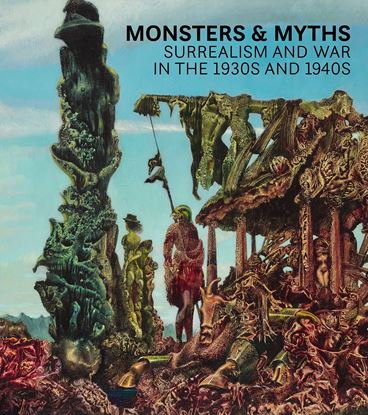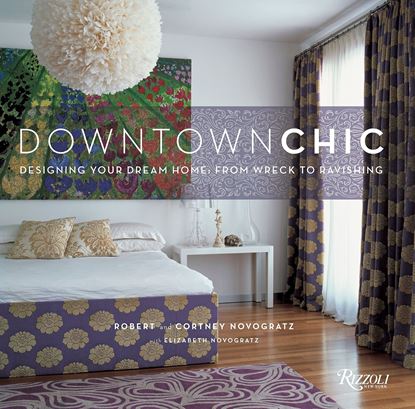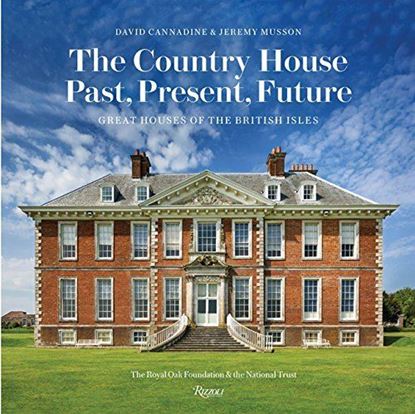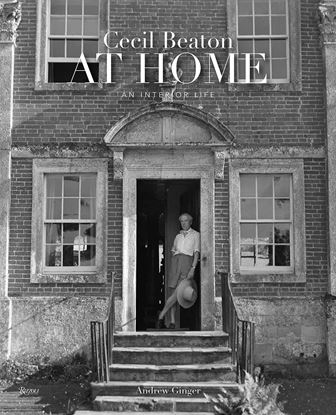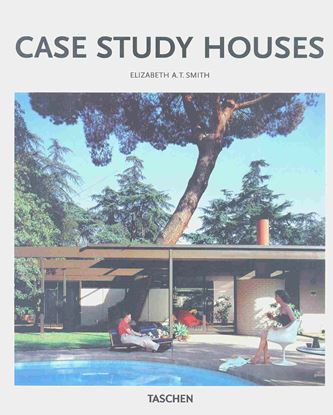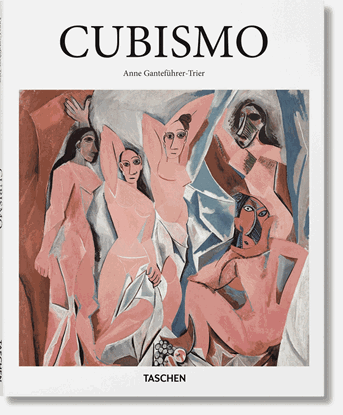

MONSTERS AND MYTHS (OF3)
During the pivotal years between the world wars, Surrealist artists on both sides of the Atlantic responded through their works to the rise of Hitler and the spread of Fascism in Europe, resulting in a period of surprising brilliance and fertility. Monstrosities in the real world bred monsters in paintings and sculpture, on film, and in the pages of journals and artists' books. Despite the political and personal turmoil brought on by the Spanish Civil War and World War II, avant-garde artists in Europe and those who sought refuge in the United States pushed themselves to create some of the most potent and striking images of the Surrealist movement. Trailblazing essays by four experts in the field trace the experimental and international extent of Surrealist art during these years--and, perhaps most unexpectedly of all, its irrepressible beauty.
995
796
DOWNTOWN CHIC
Robert and Cortney Novogratz, starts of the hit Bravo series 9 BY DESIGN, have been renovating and designing unique and hip homes for families for over ten years. Describing their signature style as a sophisticated but bohemian mix of high and low, new and old, they offer their realistic advice on how to create original, warm interiors with ease.
1,995
1,596
THE COUNTRY HOUSE. PAST, PRESENT (OF3)
From The Crown to Downton Abbey, the country house speaks to our fantasies of rustic splendour, style, and escape. Featuring three hundred photos from the National Trust, this lavish book draws back the curtain on the finest and most important historic homes in England, Wales, Scotland, and Ireland, revealing these great houses' intriguing pasts, grand interiors, and vi-brant reinventions for the enjoyment of modern-day visitors, residents, and armchair travellers. Locations include Knole, Cragside, Castle Howard, Chatsworth, Polesden Lacey, Petworth, Castle Bodiam, Blenheim, Longleat, and dozens more. Illuminating essays by country house expert Jeremy Musson, legendary British author and historian David Cannadine, and contributing writers and scholars provide unique insight into centuries of life in a historic home. This is a rich visual resource for lovers of sumptuous interiors on a human scale, as well as grand exterior architecture and gorgeous landscapes. For Anglophiles, royals watchers, and lovers of the country house lifestyle, architecture, and interior design, this is a magnificent new look at landmark British country houses, the treasures they contain, and how they speak to our fantasies of rustic splendour and escape today.
995
796
CASE STUDY HOUSES (BA-ARCH)
Los resultados del programa redefinieron el concepto de vivienda moderna, y su influencia no solo se expandió por Estados Unidos sino también por todo el mundo. Esta guía compacta de TASCHEN incluye todos los proyectos del Case Study House, ilustrado con más de 150 fotografías y planos, además de un mapa con su ubicación, incluso de aquellos ya desaparecidos.
1,350
1,080


